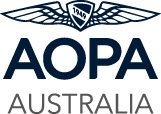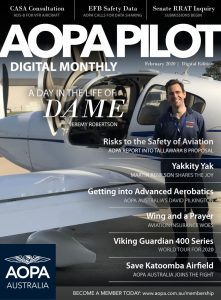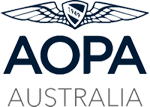The Aircraft Owners and Pilots Association of Australia has published a comprehensive report into the Risks to the Safety of Aviation regarding the proposed Tallawarra B Open Cycle Gas Turbine at Wollongong Shellharbour Airport in New South Wales.
AOPA Australia states that any form of peaking power plant will pose a serious and unavoidable risk to the safety of aviation within the circuit at Shellharbour Airport, along with potential risk to the general public residing within the vicinity of the Shellharbour Airport runway 34 circuit.
To fulfill the proponent’s Duty of Care requires the conduct of a technically rigorous and transparent plume assessment, using CASA and Shellharbour City Council endorsed critical factors with results validated against the available Bureau of Meteorology (BOM) airport site data.
It is unclear from the Report (062001-03), specifically what is being assessed, or hot it has been assessed. The report lacks the rigor and transparency necessary to correctly assess the risk the proposed plume poses to the safety of aviation at Shellharbour Airport.
The key shortcomings are;
- The Critical Plume Velocity used in the report has been calculated incorrectly and overlooks the role that Vertical Gusts play in safe flight conditions for General Aviation aircraft within the circuit. This is the most significant error in the report. The use of 6.1 m/s as the CPV does not take into account:a. the relevant aircraft type;
b. the stage of flight the aircraft, or;
c. the location of the efflux as required by regulation 139.370(2) or AC 139-05(3) paras 2.1.4 and 2.1.5 - A plume vertical velocity of 6.2 m/s encountered by a Cessna 172N climbing out at best rate of climb speed and maximum take-off weight, will push the aircraft wings to the Critical Angle of Attack (AOA), causing the wings to lose lift and the aircraft to momentarily stop flying. By definition, this represents the onset of ‘severe turbulence’ for this aircraft type under these conditions. A Piper Archer II, a Foxbat and a Jabiru J160 will have their wings stalled by a 6.1 m/s gust. The Piper Archer II would likely be pushed to phase 2 flight(wings stalling), whilst the Foxbat and Jabiru j160 would likely both be pushed to phase 3 flight (into a spin). Recovery from a spin at or below circuit height of 1000 feet is not recoverable before flight into terrain, regardless of pilot experience. Such flight into terrain is usually fatal.
- The report shows no evidence of the model output data being validated against data available from the relevant regulatory body, in this case, the Bureau of Meteorology(BOM). The report confirms that ambient winds at Shellharbour Airport are less than 5 kts for 42.9% of the time. The lack of validation of plume rise output data used in the assessment against this BOM Shellharbour Airport data, questions the integrity of the conclusions drawn.
- The Report’s approach to risk analysis is insufficient for a potential impact of this calibre;
a. Using6.1 m/s as the CPV is akin to saying that Shellharbour Airport is only used by large passenger-carrying jet aircraft cruising at altitude;
b. Excluding45 hours of the data of most risk to the aircraft concerned is not in accord with the model instruction manual, and is a statistically invalid approach to assessment;
c. Comparing FlighAware tracked ADSB flights which are primarily Instrument FlightProcedure Flights (IFR) to at risk Visual Flight Procedure (VFR) flights, which fly totally different flight paths, is an invalid comparison;
d. Comparing a hypothetical20 hours per 5 day week of power plant operations, to 24 hours per day, 365 days per year of VFR flight movements is mathematically invalid. If all the flights occur at periods other than when the plant is operating, then there is zero risk. If the flights all happen while the plant is operating, the risk is significantly higher than stated. - The conclusions drawn in the report have not been reconciled with the technically valid conclusions drawn in the Jacobs Technical Memo, “Plume Rise and Options to Reduce GT Exhaust Velocity and Temperature”, dated 31 August 2018. Jacobs confirms in the memo that exhaust plume rise is determined by two factors -momentum flux and buoyancy flux.The memo goes on to say “after a distance of several diameters from the stack, buoyancy is the dominant factor. This is consistent with Plume Rise Theory.”
The memo concludes: “Based on the plume rise modeling undertaken as part of the initial assessment and for the options considered here, it is estimated that to achieve a plume velocity of 6.1 m/s at 1031 ft AMS an exhaust temperature of 400-430 deg C at an approximate stack flow of 1300 m3/s would be needed. None of the potential engineering solutions of GT alternatives outlined here can achieve these exhaust temperatures and flows.”
AOPA Australia’s Recommendations;
- CASA to determine the appropriate Critical Plume Velocity for the correct assessment of risk to the safety of aviation, taking into account the Visual Flight Rules (VFR) aircraft affected by the plume, their location in the circuit, and the aircraft aerodynamic situation;
- CASA to determine the appropriate Critical Plume Height(s) for the assessment taking into account Visual Flight Rules (VFR) aircraft affected by the plume, their location in the circuit, and the aircraft aerodynamic situation;
- Energy Australia to present a transparent plume rise assessment with clarity of specifically what is being assessed and how it is being assessed;
- Energy Australia to validate the model output data used for the assessment, against the Shellharbour historical BOM data. Energy Australia to report an assessment of the accuracy of that data as part of the assessment;
- Energy Australia to reconcile any difference between assessment findings and those presented by Jacobs in their technical memo on peaking power plant engineering modifications;
- Energy Australia to conduct a valid risk assessment.
DOCUMENTS FOR DOWNLOAD
Appendix A1: Cessna 172N V Speed Calculations
Appendix A2: Various Aircraft CPVs for MTOW Vy Climb Out
Appendix B1: Noel Kruse FlyBetter Lesson 13 Aircraft Structural Limits
Appendix B2: Barry Schiff – Flying in Turbulence
Appendix B3: Gary Deck – Understanding Maneuvering Speed






